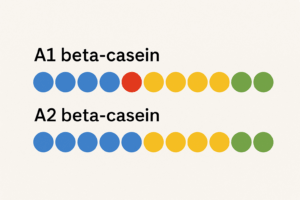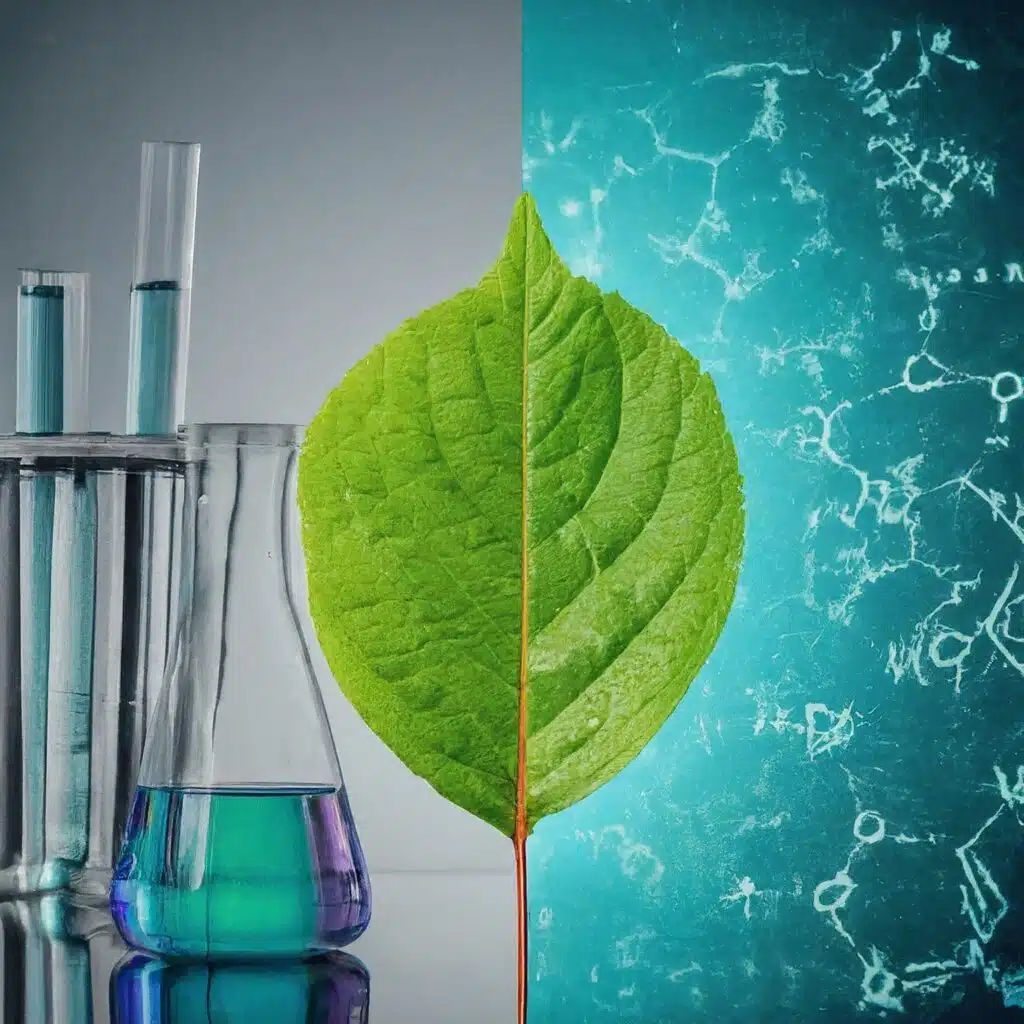If you’ve spotted A2 milk in the dairy aisle and wondered what the fuss is about, you’re not alone. Interest is growing because some people report better digestive comfort compared with standard milk. Below, you’ll find a plain-English explanation of what it is, how it differs from typical milk, what research suggests, and practical tips for deciding if it’s worth a try.
What is A2 milk?
All cow’s milk contains several proteins, including a major one called beta-casein. There are two common forms of beta-casein in modern dairy herds: A1 and A2. Standard supermarket milk usually contains a mix of both. By contrast, this product comes from cows that naturally produce only the A2 form of beta-casein. That single difference is why it’s marketed as a gentler option for the gut.
The protein difference: beta-casein A1 vs. A2
During digestion, A1 beta-casein can break down into a peptide called BCM-7. Some early research and consumer experiences associate BCM-7 exposure with digestive discomfort in susceptible individuals. Milk from A2-producing cows does not generate BCM-7 in the same way during digestion, which may help explain why some drinkers report fewer symptoms.
Why some people feel better after switching
Many shoppers who believe they’re lactose intolerant actually discover that their symptoms are tied to protein sensitivity rather than lactose itself. They report that A2 milk sits better, with less bloating or gas after a glass or a bowl of cereal. That said, experiences vary, and not everyone notices a change.
Important: it’s not lactose-free
This product still contains lactose. If you have true lactose intolerance, enzyme-treated lactose-free dairy or lactase supplements may remain necessary. For a clear primer on lactose intolerance, see MedlinePlus (NIH).
A nod to traditional breeds
Older or heritage breeds like Jersey and Guernsey cows naturally produce a higher proportion of the A2 beta-casein variant. That “back-to-basics” angle appeals to shoppers who prefer minimally altered foods and an ancestral approach to nutrition.

What the research suggests (so far)
- Some controlled trials report fewer self-reported digestive symptoms when people consume milk containing only the A2 variant compared with mixed A1/A2 milk.
- Early findings point to differences in gut responses (e.g., stool consistency and perceived comfort), though not all studies agree.
- Research is ongoing; results are promising for some individuals but not definitive. For balanced background on dairy and health in general, see the Harvard T.H. Chan School of Public Health.
Who might consider it?
- People who get minor digestive discomfort from regular milk but still want dairy’s taste and nutrition.
- Parents whose children seem sensitive to typical milk and want to test a single-variable change.
- Health-conscious shoppers exploring gentler options before switching to plant-based alternatives.

How to try it (without changing everything at once)
- Run a simple swap: Replace your usual milk with this variety for 1–2 weeks while keeping the rest of your diet steady.
- Track symptoms: Note bloating, gas, stomach cramps, or changes in bathroom habits.
- Compare back: Return to your original milk for a week and observe any differences.
- Decide pragmatically: If you feel better and enjoy the taste, keep it. If not, there’s no need to pay a premium.
Nutrition basics (and where supplements fit)
Regardless of which cow’s milk you choose, overall nutrition and gut health matter. If you’re working on digestive comfort more broadly, you may also explore professional-grade probiotics and other supports through our ToothWizVitamins page. For a mouth-health angle tied to breath and the oral microbiome, see our article The Science Behind Morning Breath.
Cost, availability, and taste
Cartons are now widely available in many grocery chains and online. Expect to pay more than for store-brand milk. Taste is generally similar to standard whole or reduced-fat milk; most people cannot distinguish it in coffee, smoothies, or cereal.
Common questions
Is it safe for kids? For most healthy children who already tolerate dairy, yes—this is still just cow’s milk with a different protein profile. If your child has a diagnosed milk allergy, consult your clinician before any trial.
How is it different from lactose-free milk? Lactose-free milk has had lactose broken down by the enzyme lactase. This product alters which beta-casein protein is present; it doesn’t remove lactose.
Will it help if I have a confirmed milk allergy? No. A true milk allergy involves the immune system, and this is still cow’s milk protein.
The bottom line
A2 milk isn’t a miracle food, but it can be a smart, low-effort experiment if regular milk leaves you uncomfortable. Because it’s still real dairy, you get familiar flavor and nutrition while testing a single change—the beta-casein variant. If you feel better on A2 milk, keep it in your routine; if you don’t notice a difference, there’s no harm done in switching back.






